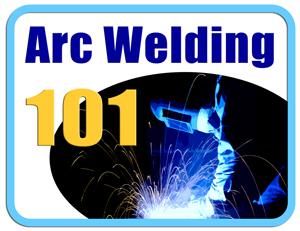- FMA
- The Fabricator
- FABTECH
- Canadian Metalworking
Categories
- Additive Manufacturing
- Aluminum Welding
- Arc Welding
- Assembly and Joining
- Automation and Robotics
- Bending and Forming
- Consumables
- Cutting and Weld Prep
- Electric Vehicles
- En Español
- Finishing
- Hydroforming
- Laser Cutting
- Laser Welding
- Machining
- Manufacturing Software
- Materials Handling
- Metals/Materials
- Oxyfuel Cutting
- Plasma Cutting
- Power Tools
- Punching and Other Holemaking
- Roll Forming
- Safety
- Sawing
- Shearing
- Shop Management
- Testing and Measuring
- Tube and Pipe Fabrication
- Tube and Pipe Production
- Waterjet Cutting
Industry Directory
Webcasts
Podcasts
FAB 40
Advertise
Subscribe
Account Login
Search
Determining welding shielding gas ratios
- By Paul Cameron
- Updated February 9, 2024
- October 29, 2014
- Article
- Arc Welding
Q: For years we have used 75/25 argon/carbon dioxide during gas metal arc welding (GMAW). I was told by my supplier that I needed to change to 90/10. Will one gas mixture provide better welding penetration than the other? Most of our work is mild steel (A-36), 0.1875 to 0.25 in. thick, although we do go thinner and heavier. Which gas is the best for us?
Choosing the Right Gas Ratio
A: One gas mixture will provide more weld penetration than the other, and equally important, one will provide a better penetration profile than the other. The mix you are currently using should serve you well for the 0.1875- to 0.25-in. material that you’ve noted. You will probably experience more burn-through when welding thinner materials with 75/25. Do you weld out-of-position? If so, the 75/25 will be easier to control when welding vertical-up and overhead.
Typically, the 75/25 will give you more weld penetration and a better penetration profile than 90/100. That’s why it burns through thin material. On the other hand, if you’re trying to reduce weld spatter, rarely weld out-of-position, and tend to weld thinner material (less than 0.25 in.), the 90/10 is a good choice. You will still get good penetration when welding on thicker materials (greater than 0.375 in.), but the penetration profile might be less than desirable (less side-wall fusion).
Testing the Ratio
Advice from suppliers can be helpful, but don’t make significant changes to your weld process without conducting your own tests. Weld samples that represent your common weld joints and cut and etch them to see if they have the profile that you are comfortable with.
About the Author

Paul Cameron
Braun Intertec
4210 Highway 14 East
Rochester, MN 55904
About the Publication
subscribe now

The Welder, formerly known as Practical Welding Today, is a showcase of the real people who make the products we use and work with every day. This magazine has served the welding community in North America well for more than 20 years.
start your free subscription- Stay connected from anywhere

Easily access valuable industry resources now with full access to the digital edition of The Fabricator.

Easily access valuable industry resources now with full access to the digital edition of The Welder.

Easily access valuable industry resources now with full access to the digital edition of The Tube and Pipe Journal.
- Podcasting
- Podcast:
- The Fabricator Podcast
- Published:
- 04/16/2024
- Running Time:
- 63:29
In this episode of The Fabricator Podcast, Caleb Chamberlain, co-founder and CEO of OSH Cut, discusses his company’s...
- Industry Events
16th Annual Safety Conference
- April 30 - May 1, 2024
- Elgin,
Pipe and Tube Conference
- May 21 - 22, 2024
- Omaha, NE
World-Class Roll Forming Workshop
- June 5 - 6, 2024
- Louisville, KY
Advanced Laser Application Workshop
- June 25 - 27, 2024
- Novi, MI
































